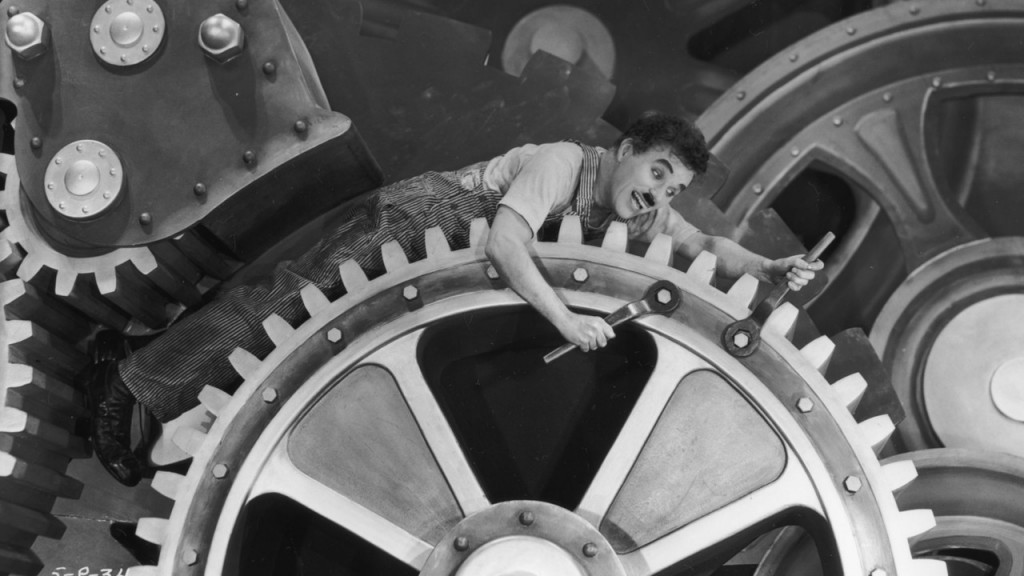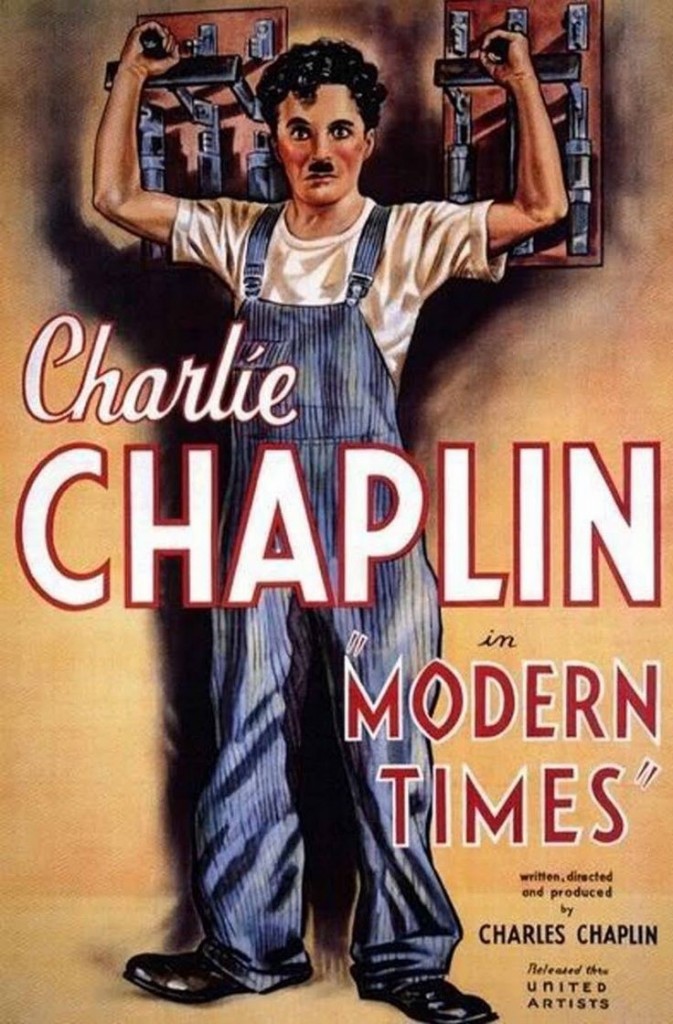 By Susan Boskey
By Susan Boskey
“By a continuous process of inflation, governments can confiscate, secretly and unobserved, an important part of the wealth of their citizens. By this method, they not only confiscate, but they confiscate arbitrarily; and while the process impoverishes many, it actually enriches some….The process engages all of the hidden forces of economic law on the side of destruction, and does it in a manner that not one man in a million can diagnose.” – Economic Consequences of the Peace, 1919 by John Maynard Keynes, economist
In 1936 Charlie Chaplin wrote, directed and acted in the silent film, Modern Times. His film was a statement on the many social issues brought on by the Great Depression, including the then world of modern industry. At one point in the movie, he is working on a conveyor belt that starts speeding up. He struggles to keep up as he screws nuts faster and faster but eventually collapses in a total meltdown that lands him in the hospital. Afterwards, he is in and out of jail, helps others who struggle with hunger, finds new work, and ultimately faces an uncertain future.
 So how is this like today, you may ask? From my perspective only the times, the people and the platform have changed; the 21st century digital world of computers, and those of us dependent on them, has replaced the analog world of most all things mechanized. Yet the struggles continue and uncertainty looms larger than ever.
So how is this like today, you may ask? From my perspective only the times, the people and the platform have changed; the 21st century digital world of computers, and those of us dependent on them, has replaced the analog world of most all things mechanized. Yet the struggles continue and uncertainty looms larger than ever.
A January 7, 2016 article in the prestigious magazine, The Atlantic, asks, “Why do Americans Work so Much?” I remember in the 1960s and ’70s when the news was that the advent of the computer would totally reverse the typical work week of 40 hours; we would have much more free time due to increased productivity and the efficiency provided to workers by the computer. Oh well, so much for that idea. Now many people work 7 days a week just to avoid the Monday-morning overwhelm of emails and texts that come in over the weekend.
 John Maynard Keynes, a 20th-century British economist who greatly influenced the current monetary system, believed back even before the 1960s, that industrialized countries would be so productive by now that we would be enjoying 15-hour work weeks. He also believed that “the standard of life” would rise across the board for people of every social stratum. How can such supposedly smart people be so blind to reality? Perhaps, in his case, it’s because during an important phase in his economic career he was employed by the British government and did not want to rock the boat.
John Maynard Keynes, a 20th-century British economist who greatly influenced the current monetary system, believed back even before the 1960s, that industrialized countries would be so productive by now that we would be enjoying 15-hour work weeks. He also believed that “the standard of life” would rise across the board for people of every social stratum. How can such supposedly smart people be so blind to reality? Perhaps, in his case, it’s because during an important phase in his economic career he was employed by the British government and did not want to rock the boat.
The Atlantic article goes on trying to assess what might have gone wrong as most Americans still have to work at least 40 hours a week. The answer? If you can find the nose on your face, you can solve this unfathomable mystery. But first, economist, Benjamin Friedman’s, cites his three theories in the article.
- “Perhaps people just never feel materially satisfied, always wanting more money for the next new thing.”
- “In an era of ever fewer settings that provide effective opportunities for personal connections and relationships, people may place more value on the socializing that happens at work.”
- “American inequality means that the gains of increasing productivity are not widely shared.”
Not bad but certainly only scratching the surface. You probably already know what I’m going to say…it’s the system! Here’s a thumbnail overview on what happened.
Starting early in the 2nd century, the goldsmiths of a community acted as money changers; they were the banks to the public. Called Strong Room Keepers, these men figured out how to cheat the system by lending out more gold (at interest) than they had on deposit. This was the beginning of the global banking fractional-reserve system.
While in the Middle Ages, Canon law of the Catholic Church forbade loaning at interest. It became a crime in Europe, called usury. They believed that “the purpose of money was to serve society to facilitate exchange of goods to lead a virtuous life” and that interest added on to money hindered such purpose.
Then the British Free Coinage Act of 1666 tipped the balance of power back to the money changers according to Alexander Del Mar, head of the U.S. Department of Weights and Measures in the late 19th century. It “altered the monetary systems of the world. The specific effect of this law was to destroy the royal prerogative of coinage, nullify the decision in the Mixt Moneys Case of 1604 and inaugurate a future series of commercial panics and disasters which, to that time were totally unknown.” A now familiar trend was set in motion.
In 1694 the first privately owned central bank was established and became the model for central banks worldwide: The Bank of England.
In America until the 1764 Currency Act, colonies flourished because they used something called colonial script, a debt-free paper money not backed by gold or silver. Then, no big surprise, the Currency Act outlawed the colonies from continuing to print their own money.
 The first privately-owned central bank in America was started in 1781 and called The Bank of North America. The privately owned U.S. Federal Reserve Bank (central bank) began in 1913 after two other failed attempts at central banks in 1791 and 1812. These four banks were and are of private origin despite the U.S. Constitution, Article I, Section 8’s mandate for money to be controlled by the Congress. “The Congress shall have power to coin money, regulate the value thereof and of foreign coin, and fix the standard of weights and measures.”
The first privately-owned central bank in America was started in 1781 and called The Bank of North America. The privately owned U.S. Federal Reserve Bank (central bank) began in 1913 after two other failed attempts at central banks in 1791 and 1812. These four banks were and are of private origin despite the U.S. Constitution, Article I, Section 8’s mandate for money to be controlled by the Congress. “The Congress shall have power to coin money, regulate the value thereof and of foreign coin, and fix the standard of weights and measures.”
Thereafter, money issued by every central bank throughout the world was loaned into existence with interest. Money itself became an I.O.U. Over time as a nation’s debt grows, simple interest turns into compound interest. To repay national debt would collapse the economy due to a banking-system dependent on debt.
This very process of debt expansion (called wealth creation by Alan Greenspan) trickles down to individuals and families who eventually have more money going out (due to mounting debt) than they do coming in. While paying debt-service on borrowed money, a family’s working capital erodes and tips the scale towards lacking sufficient funds to cover expenses. The vicious cycle begins as present and potential future earnings are depleted: unmanageable amounts of debt require increased access to larger amounts of credit. All the while, these debt-service interest payments travel up the money pyramid as profits to banking shareholders and their colleagues.
Why do Americans work so much? They are under the tyranny of debt. Charlie Chaplin’s Modern Times was only the beginning of the personal and social issues brought on by the loss of purchasing power in a debt-based system where your interest payments continue to consolidate in fewer and fewer hands at the top of the wealth pyramid. Thus the gap between the haves and have-nots grows ever wider. Different times demand a different approach to personal economics; those who see the writing on the wall are called to revise and update their financial strategies if to thrive and not drown in debt.
Susan Boskey is author of the book, The Quality Life Plan®: 7 Steps to Uncommon Financial Security. After exposing the bottom-line of why more and more families need credit each month just to make ends meet, Susan provides game-changing practical strategies, tactics and templates to help you create a life of greater ease. You can reverse the downward trend of credit and debt while learning how to establish a long-term, debt-free lifestyle; a life that allows you to build both financial wealth and the wealth of well-being midst the challenges of today’s economic landscape. To learn more or to purchase the book, please visit her website at http://TheQualityLifePlan.com
Susan can customize her strategies and templates for your particular situation and is available to coach you through this process. She can be reached through her website.

Jefferson, who despised the banksters, understood….
“And to preserve their independence, we must not let our rulers load us with perpetual debt. We must make our election between economy and liberty, or profusion and servitude. If we run into such debts, as that we must be taxed in our meat and in our drink, in our necessaries and our comforts, in our labors and our amusements, for our callings and our creeds, as the people of England are, our people, like them, must come to labor sixteen hours in the twenty-four, give the earnings of fifteen of these to the government for their debts and daily expenses; and the sixteenth being insufficient to afford us bread, we must live, as they now do, on oatmeal and potatoes; have no time to think, no means of calling the mismanagers to account; but be glad to obtain subsistence by hiring ourselves to rivet their chains on the necks of our fellow-sufferers.”
Great addition to this excellent article, blue!
Astounding that Jefferson had such a clear insight into the core of economic manipulation so far back.
With this it becomes more evident how ignorant and corrupt, and abjectly useless, “career” politicians have become in recent times!
Keynes must not have got the agenda 2030 memo.
Keep ’em working so much they have little time for anything else.
They shall not own anything.
They shall take the dumb down vaccines, so as to become sick and tired.
They shall get on the train for work and return on the train at night.
They shall keep the boob tube on all the time to re-assure them that all is well.
They shall use plastic.
They shall attend the ‘one’ church.
They shall not have babies.